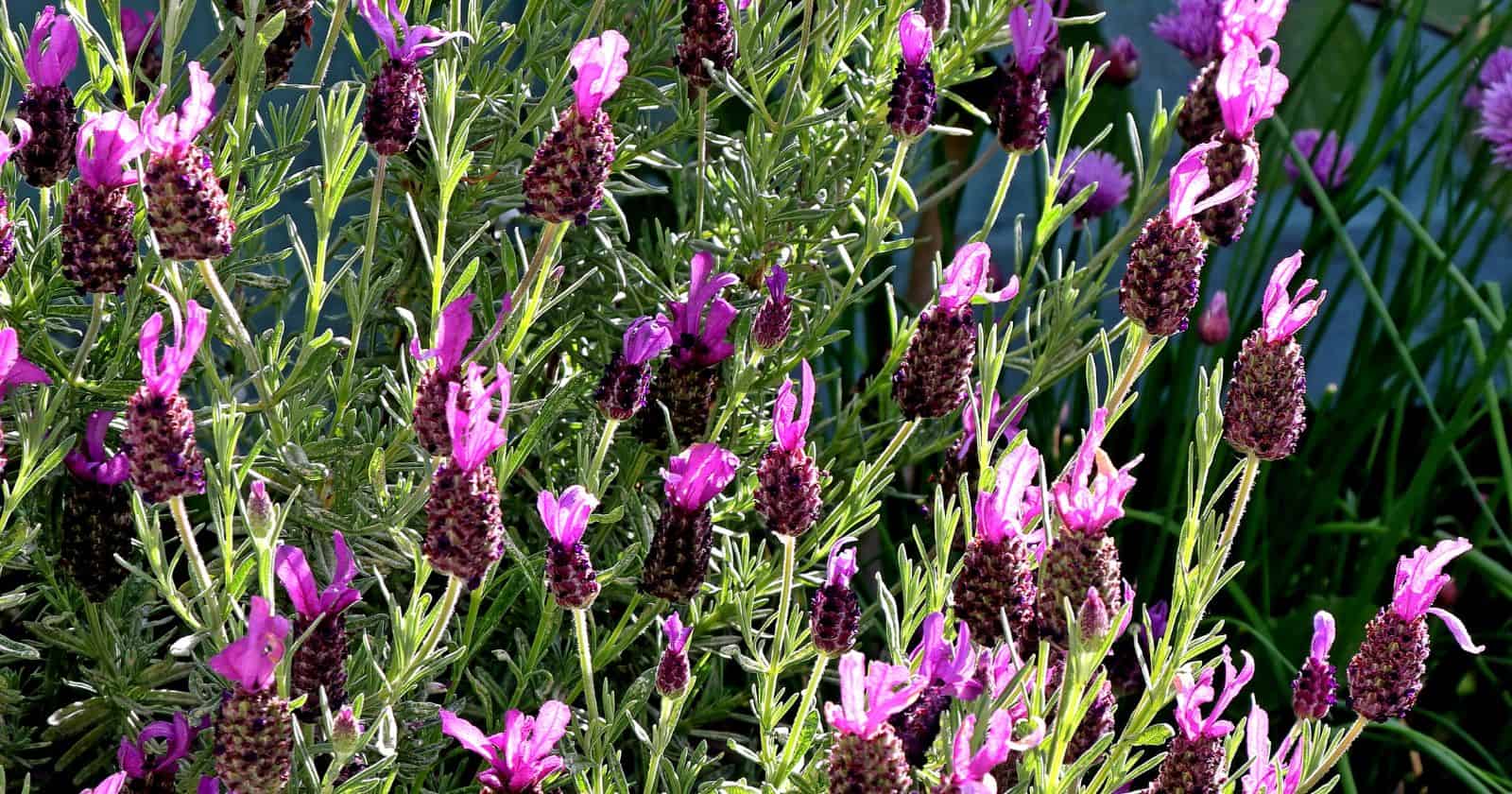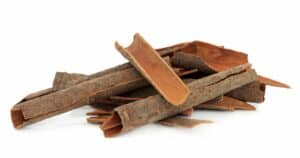Are you tired of constantly struggling with anxiety or sleep issues? Look no further than French Lavender.
This miraculous plant has been used for centuries to combat stress, insomnia, and migraines.
French Lavender, also known as Lavandula angustifolia, is a member of the mint family and native to the Mediterranean region. Unlike some other strains of Lavender, French Lavender contains a higher concentration of linalool, a natural compound with calming and soothing properties.
In this blog post, we will delve deeper into the benefits of French Lavender and how to incorporate it into your daily routine.
We will explore its uses in aromatherapy, topical applications, and even as a culinary ingredient.
So sit back, relax, and let the soothing scent of French Lavender guide you to a place of peace and tranquility.
What is French Lavender?
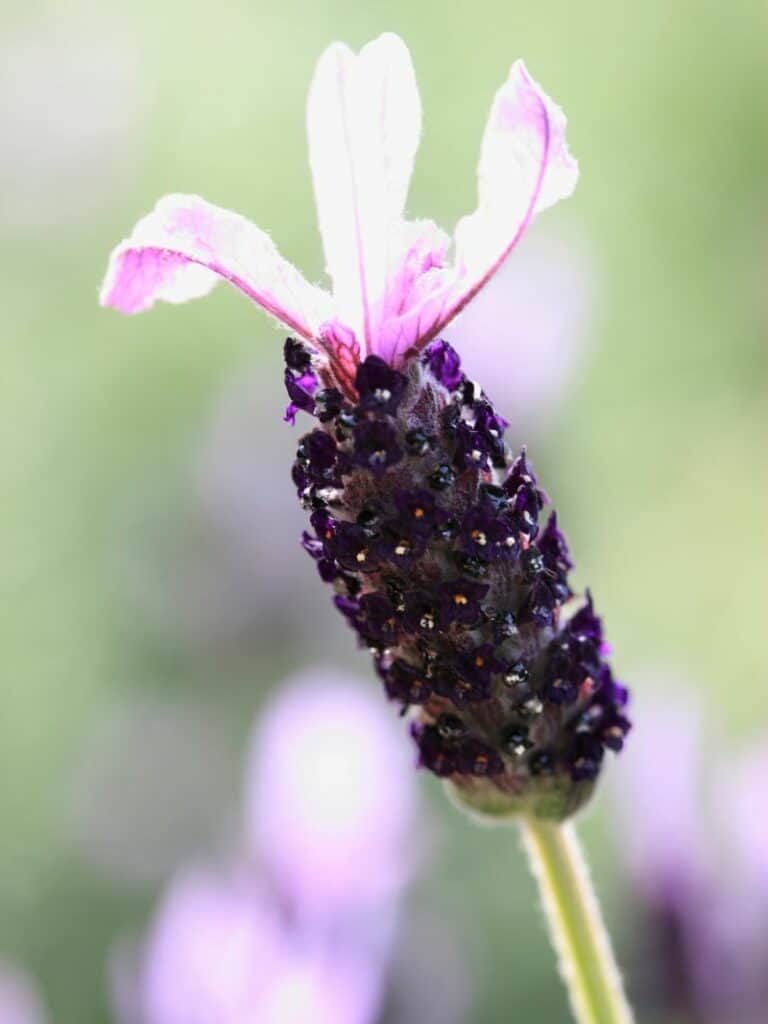
French Lavender, also known as Lavandula angustifolia, is a popular variety of lavender originating in the Mediterranean region, specifically in the mountains of France and Spain. Its scientific name, Lavandula angustifolia, reflects its narrow leaves that are long and pointy.
Here are some characteristics of French Lavender:
- It grows shrub-like, reaching 2-3 feet in height.
- The flowers are small, pale purple, and have a sweet fragrance.
- French Lavender blooms from late spring to early summer, attracting bees and butterflies.
- It is a hardy plant that can tolerate cold temperatures but requires well-drained soil and plenty of sunlight.
- French Lavender has many uses, including as an essential aromatherapy oil, cosmetics, and perfumes ingredient, and as a decorative plant in gardens and landscaping.
Comparison with other types of Lavender
English Lavender
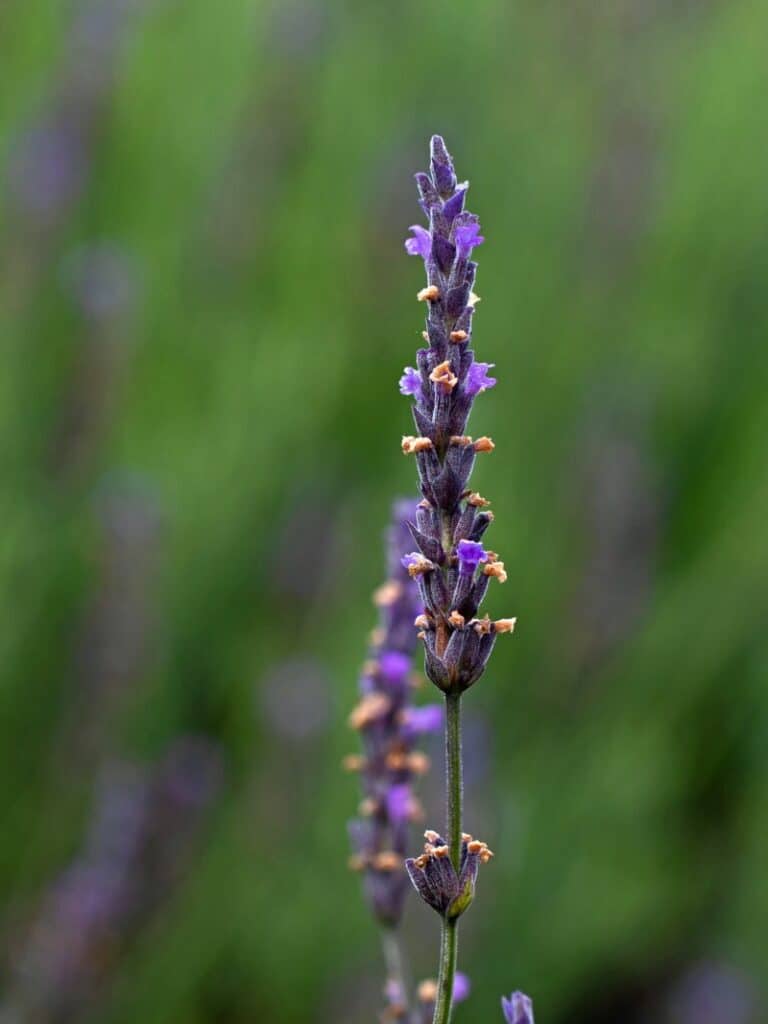
English Lavender (Lavandula angustifolia ‘Hidcote’ or ‘Munstead’) is a close relative of French Lavender and is commonly used in aromatherapy and gardening. It has a deeper purple color and a stronger fragrance but is less hardy and can be more sensitive to harsh weather conditions.
Spanish Lavender
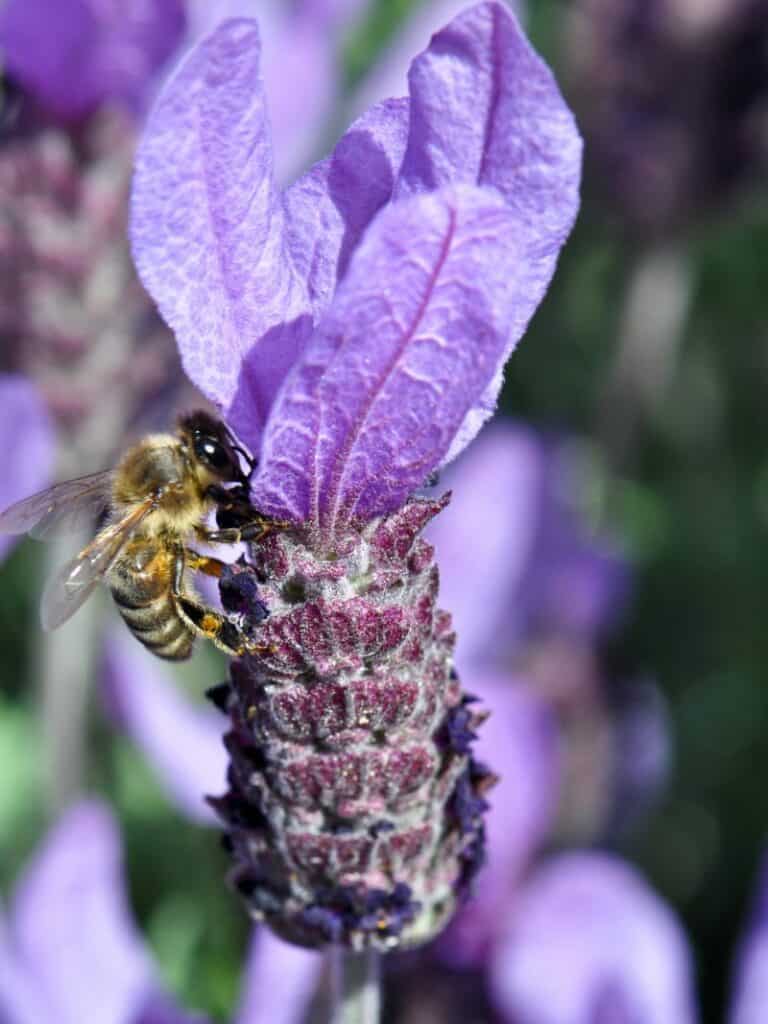
Spanish Lavender (Lavandula stoechas) has a distinct appearance with colorful bracts that resemble rabbit ears. It has a more pungent fragrance and blooms later in the season but is less hardy and may not survive in colder climates.
Lavender hybrids
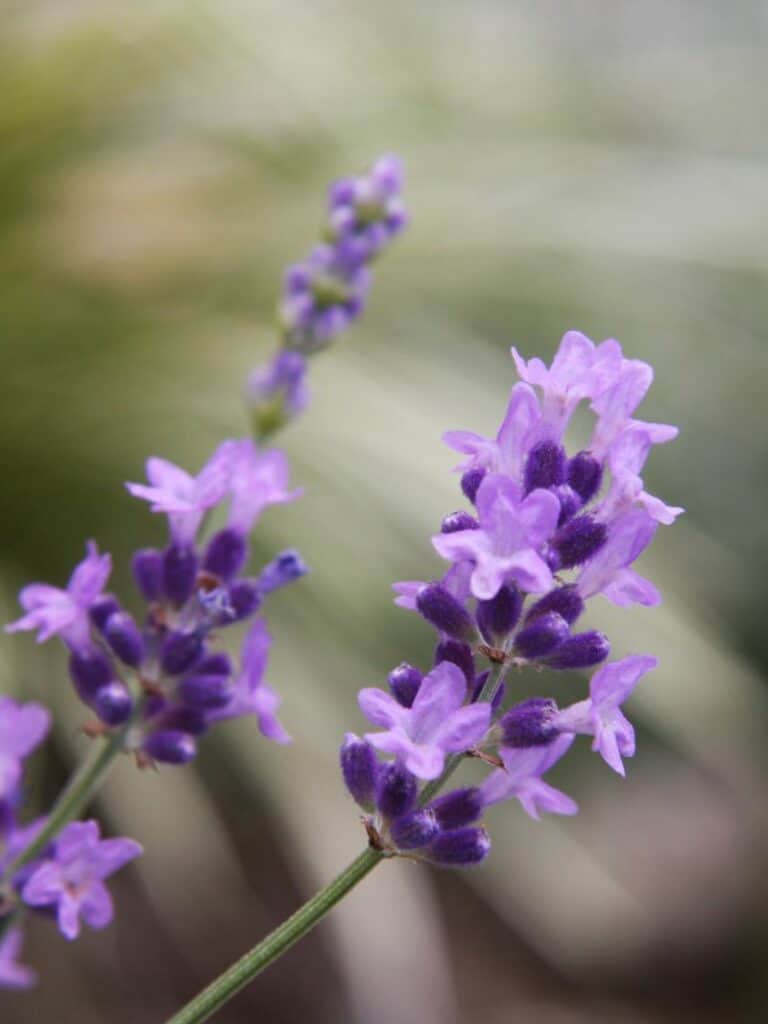
Lavender hybrids, such as Lavandula x intermedia (‘Grosso’ or ‘Provence’), are crosses between different lavender species and have unique blends of characteristics. They may have larger flowers, stronger fragrances, or different bloom times than traditional lavender varieties.
Health Benefits of French Lavender
Did you know that it can also improve the quality of your sleep and even potentially reduce migraines and headaches?
French Lavender is a natural relaxant, which makes it an excellent tool to help you unwind before bed. A study found that inhaling the scent of lavender before sleep can improve sleep quality, making you feel more refreshed when you wake up.
Additionally, it can also help reduce insomnia and improve the overall duration of sleep.
Aside from being an excellent sleep aid, it has also been found that French Lavender can help reduce migraines and headaches. This is due to its ability to alleviate stress and anxiety, known triggers for migraines and headaches.
Incorporating French Lavender into your daily routine can be done in several ways, including essential oils, a lavender-infused pillow or eye mask, or adding dried lavender to your tea.
With its multitude of benefits, French Lavender is a secret to a restful night’s sleep and a calmer mind.
Aromatherapy with French Lavender
French Lavender, scientifically known as Lavandula angustifolia, is a popular essential oil among aromatherapy enthusiasts for its calming and soothing properties. Here’s how you can use it for aromatherapy and reap its benefits:
Inhalation
The most common method of using French Lavender in aromatherapy is inhalation, which can be done through various techniques such as:
Diffusing
Add a few drops of French Lavender essential oil to a diffuser and let the aroma fill the room. This method helps relieve stress, and anxiety, and promotes relaxation.
Steam inhalation
Add a few drops of the oil to a bowl of hot water and inhale the steam for a few minutes. This method helps clear congestion, ease headaches, and promote better sleep.
Direct inhalation
Apply a drop or two of the oil to a tissue or cloth and inhale the aroma directly. This method is helpful for quick relief from anxiety or headaches.
Topical application
French Lavender essential oil can also be applied topically, when mixed with a carrier oil such as jojoba or coconut oil. This method is great for targeting specific areas or for massages. It can help ease muscle pain, reduce inflammation, and improve skin health.
Bathing
Adding a few drops of French Lavender oil to your bathwater can promote relaxation and help you unwind after a long day.
Benefits of French Lavender in Aromatherapy:
- Helps reduce anxiety and stress: French Lavender essential oil has calming effects that can help reduce anxiety and stress levels. Aromatherapy with French Lavender is an effective method of promoting relaxation and calmness.
- Promotes better sleep: Inhaling French Lavender essential oil before bed can help improve sleep quality. Studies show that French Lavender helps increase slow-wave sleep, the deep sleep stage where the body repairs and rejuvenates itself.
- Relieves headaches and migraines: The soothing aroma of French Lavender oil can help ease headaches and migraines. Applying the oil to the temples or inhaling it can provide quick relief.
- Improves skin health: French Lavender oil’s antiseptic, anti-inflammatory, and antioxidant properties make it an excellent choice for improving skin health. It can help reduce skin irritation and acne and promote wound healing when applied topically.
Culinary Uses of French Lavender
French Lavender is a popular herb widely known for its therapeutic and aromatic properties. But French Lavender is not just limited to aromatherapy or beauty products; it can also be used in cooking and baking.
Its unique flavor profile and potential health benefits make it a versatile ingredient that can add a touch of sophistication to any dish.
Here are some ways to incorporate French Lavender into your culinary creations:
Infused Oil
Combine dried French Lavender and olive oil in a jar and let sit for a week before using. This oil can be used on salads, bread, or as a marinade for meat.
Lavender Sugar
Mix dried French Lavender with sugar and let sit for a few days before using. Lavender sugar can be used in baking or as a sweetener in tea or coffee.
Lavender Honey
Combine dried French Lavender with honey and let sit for a few days before using. Lavender honey can be used as a sweetener in tea, baking or drizzled over cheese or fruit.
Lavender Butter
Mix softened butter, dried French Lavender, and a pinch of sea salt. This butter is delicious on toast, fresh baked bread, or as a topper for grilled steak.
Lavender Infused Tea
Add dried French Lavender to your regular tea leaves, or steep the herb alone in hot water. The lavender tea is great for relaxing and promoting better sleep.
The use of French Lavender in cooking and baking provides more than just flavor. It has potential health benefits, such as aiding digestion, reducing inflammation, and promoting relaxation.
Adding a pinch of French Lavender to your favorite dish will elevate its taste and help you feel better. So, bring out the French Lavender and get creative in the kitchen!
French Lavender Substitutes
It may not always be easily accessible or affordable, especially for those living in areas without lavender farms or specialty stores. Fortunately, several substitutes for French Lavender can help you achieve similar results.
English Lavender
Also known as Lavandula vera, English Lavender is a close relative of French Lavender, sharing many of the same characteristics. It has a similar scent profile, with a slightly sharper, medicinal note that makes it ideal for soaps and skincare products.
English Lavender also has a shorter shelf-life than French Lavender, so it’s best to use it fresh or freeze-dried.
Spanish Lavender
Lavandula stoechas, commonly referred to as Spanish Lavender, is another popular type of lavender that can be used as a substitute for French Lavender. It has a strong, earthy scent and blooms in lovely shades of purple and pink.
Spanish Lavender is often used to make lavender-infused honey, as it has a slightly sweeter, more floral taste than French Lavender.
Lavandin
Lavandin, or Lavandula x intermedia, is a hybrid lavender created by crossing French Lavender with Spike Lavender. As a result, it has a stronger scent and is often used for making essential oils, perfumes, and candles.
Lavandin has a more camphorous, herbal smell than French Lavender, making it ideal for blends requiring more depth.
Spike Lavender
Lavandula latifolia, commonly known as Spike Lavender, is a less popular type of lavender that can still be used as a substitute for French Lavender. It has an intense, medicinal scent and is often used in medicinal applications, such as aromatherapy and massage oils.
Spike Lavender is also popular for insect repellents and cleaning products due to its strong antimicrobial properties.
In conclusion, French Lavender substitutes are readily available, and each has its unique scent and characteristics, allowing you to tailor your lavender-based products to your liking.
Whether you’re looking for a floral, sweet scent or a more herbal, earthy one, there’s a lavender variety out there for you.

